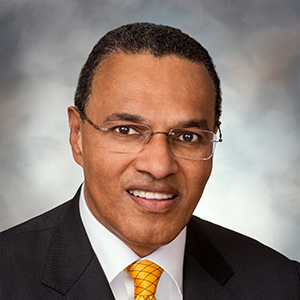Our nation’s workforce continues to evolve in a workplace transformed by new ideas, products, processes and services—the offspring of our highly productive innovation ecosystem. At the same time, the workforce is affected by increasing globalization and major demographic shifts—including an aging Baby Boomer generation and growing minority and immigrant populations. These changes have created a more competitive economy that affects the substance and conditions of the work we will do across occupations, the participation of underserved groups in the economy, and the ways colleges and universities prepare students for careers.
Freeman A. Hrabowski III is president of the University of Maryland–Baltimore County.

The evolving workplace will require four areas of expertise:
• A deep knowledge of the work, whether in fine arts, media, manufacturing, sales, accounting, public policy, finance, health care, science, or engineering.
• A facility with technology, ranging from email and office productivity software to imaging, database management, health informatics, coding, cybersecurity, systems engineering or robotics.
• An ability to engage in critical thinking and problem-solving and work in interdisciplinary, cross-functional teams.
• People skills, including interpersonal communication, flexibility, and emotional intelligence.
The United States has seen a gradual reduction in routine work, much of which can be automated or offshored. Today’s work more often involves creativity, critical thinking, and personal interaction. Employees with interdisciplinary training have a leg up. Consider the mechanical engineer who can code, the economist with strong quantitative skills who can work in a politicized policy environment, or the artist with business management skills. The increasingly complicated and more demanding world often requires at least some postsecondary education, whether specific coursework or certification, or work toward a two-year, four-year, or advanced degree—but it should also be interesting and fulfilling.
On university campuses, we can do a great deal to ensure that, even in this demanding context, our faculty and staff achieve balance in their lives. Researchers have found that telework can increase productivity, job satisfaction, and well-being; eliminate commuting time; and enable people to juggle work and family demands. At my university, we are encouraging work-life balance by facilitating telework, promoting wellness, and supporting families. (At the same time, we encourage strong faculty, staff, and student interactions on campus.) In 2005, we implemented a plan that allows faculty to modify or otherwise reduce duties to address family needs, from the birth of a child to caring for an elderly parent. The plan includes a one-year tenure clock extension for assistant professors.
As employers now routinely ask for T-shaped employees—those with deep technical knowledge and broad business and people skills—postsecondary institutions must now provide students with knowledge in their fields and encourage them to develop a strong work ethic and persistence; an appreciation of the larger contexts of their work; and the ability to work in groups and to market their ideas.
Advances in our understanding of how people learn, along with new technologies, have led us to re-design how we teach a variety of courses from composition to psychology to engineering mathematics, not only to improve course delivery but also to develop workforce skills. For example, Introductory Chemistry at my university, the University of Maryland–Baltimore County, now incorporates group-based, problem-focused, experiential learning through our Chemistry Discovery Center. Students learn to ask questions, collaborate, manage projects, and conduct research.
I chaired a 2011 National Academies study committee that wrote “Expanding Underrepresented Minority Participation: America’s Science and Technology Talent at the Crossroads.’’ We discovered that the majority of students in all racial and ethnic groups who start an undergraduate major in science, technology, engineering, or mathematics (STEM) switch to a non-STEM field. The course re-design described above can address this attrition. The committee also found that the racial and ethnic groups most underrepresented in STEM are also the fastest growing and will, by mid-century, comprise nearly half the nation’s population. At UMBC, through such innovations as the Meyerhoff Scholars Program, we have demonstrated that high expectations, hard work, and the right mix of academic, social, and financial support can help students of all races and economic backgrounds succeed.
One reason for the success of the Meyerhoff program is a strong emphasis on preparing students for graduate school and subsequent research careers.
People who are successful in the professions or academia usually have had a mentor. The challenge we face is in helping underserved students—whether minorities, women, or first-generation college students—identify and work with people who can provide them with connections, guidance, and an understanding of the unspoken rules crucial to success.
Partnerships involving academic programs, employers, and alumni can benefit all involved. For example, employer advisory groups can provide helpful feedback to faculty and students about program effectiveness. Student internships are useful both as experiential learning and as a recruitment pathway. Employer-sponsored projects provide students with opportunities for applying knowledge, working in groups, developing solutions for real-world clients, and presenting those solutions.
Whether we are talking about jobs that require a two-year, four-year, or graduate degree, students need a broad education because we do not know how different the world will be and what specific skills students will need in the decades to come. What we do know, however, is that people must be prepared to adapt and to work in a world of unknowns with the confidence that, by asking good questions, thinking critically, collaborating with others, and persisting, they can learn whatever is necessary.

For the Future of Work, a special project from the Center for Advanced Study in the Behavioral Sciences at Stanford University, business and labor leaders, social scientists, technology visionaries, activists, and journalists weigh in on the most consequential changes in the workplace, and what anxieties and possibilities they might produce.




